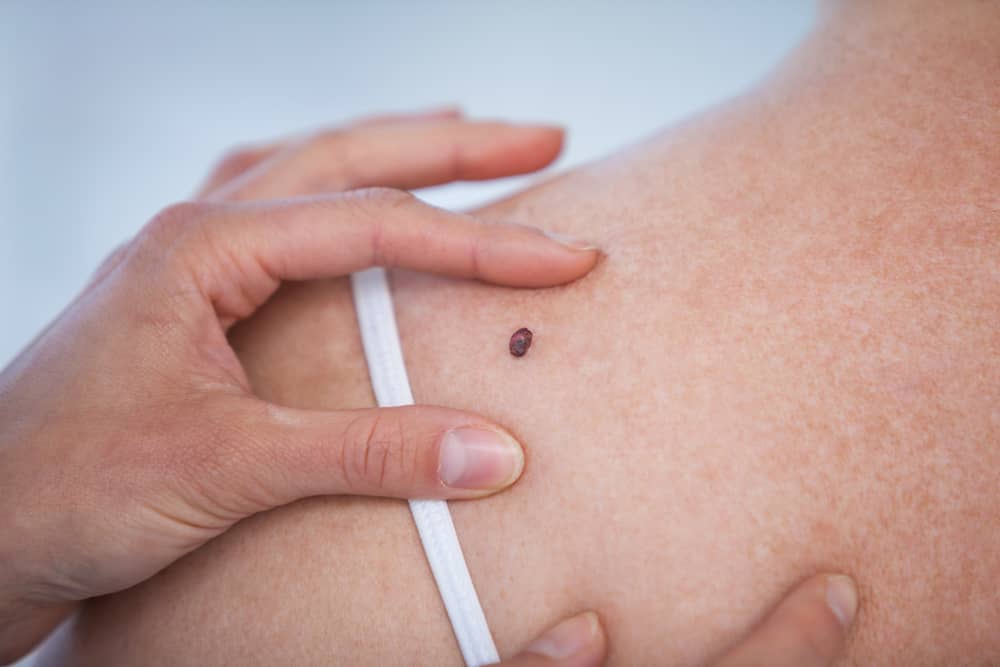
Skin cancer is the most common type of cancer and melanoma is the most dangerous. Melanoma rates have been on the rise over the past 30 years and melanoma is responsible for most of the skin cancer-related deaths in the United States. For this reason, today we are going to discuss the signs, symptoms and risk factors to help you identify any issues in the early stages when treatment can be more successful.
Melanoma is one of the most dangerous types of skin cancer. It may appear as a new skin mole or as one that has changed in appearance. This mole may be elevated on the skin or flat. They will usually be dark in color, either black or brown, but could also appear as red or blue. If you suspect melanoma, using the ABCDE guidelines will help you but it is also extremely important to see your physician or dermatologist to be diagnosed correctly.
What is Skin Cancer?
Skin cancer is the abnormal growth of skin cells and usually develops on skin that is exposed to the sun. However, it is also possible for skin cancer to develop in areas that are not usually exposed to the sun.
Types of skin cancer:
● Basal Cell – found mainly in areas exposed to the sun, very common and usually very treatable. Detected at an early stage and removed promptly are almost always curable and cause minimal damage.
● Squamous Cell – typically develops in chronic sun-exposed areas of your body.
● Melanoma – more likely to grow and spread than the more common types
● Merkel Cell – very rare and tends to grow quickly, may be hard to treat if it spreads past beyond the skin
So, How do you Recognize Skin Cancer: What Does Skin Cancer Look Like and Is It Itchy?
Skin cancer may be colored, raised, flat to the skin, irregular, or change over time. Skin cancer may also be itchy. It may appear as crusty sores that are itchy, crusting, bleeding, or scabbed over. If you notice any of these signs, please make an appointment with a physician for an evaluation.
How Do I Know If I Just Have Age Spots?
Age spots are often called liver spots or sunspots. They usually occur in people over 50 and in areas that are exposed to the sun.
Age spots can definitely look like cancerous growths but even if they are not diagnosed as cancer, they are clear signs that you have spent a lot of time in the sun. The age spots are the skin’s attempt to protect it from even further sun damage.
Age spots do not require medical care but it is still important to be looked at by a physician. They also will not fade over time but can be removed for cosmetic reasons if you should decide. It may be a sign of melanoma if spots are black, irregular, or have changed. Please contact your doctor for an evaluation if you have noticed any concerning changes.
Protect Your Skin!
There are many ways you can protect your skin from the dangerous rays of the sun.
● Wear your sunscreen! Even when you don’t think it’s sunny, the harmful rays are still there
● Wear sunglasses and protective clothing when outside
● Avoid tanning beds
● Check your skin regularly
● Choose shade when the sun’s rays are the strongest
When to See the Doctor:
If you observe anything different or concerning on any part of your skin, if you notice something that has grown or changed over time, please make an appointment with one of our physicians for an evaluation. If appropriate, virtual appointments may be available.
Schedule an appointment with one of our skin cancer specialists
References/Resources:
https://www.cancer.org/cancer/skin-cancer.html
https://www.cancer.net/cancer-types/skin-cancer-non-melanoma/symptoms-and-signs

